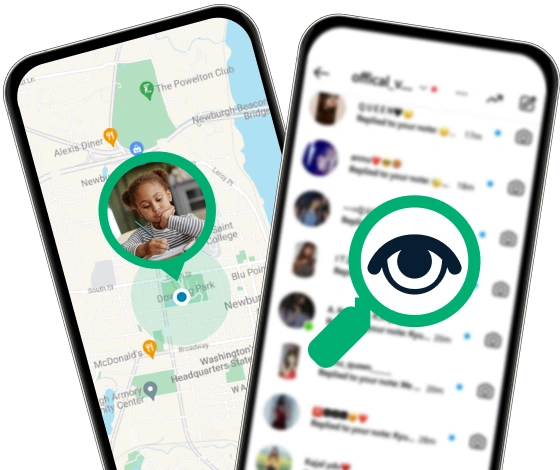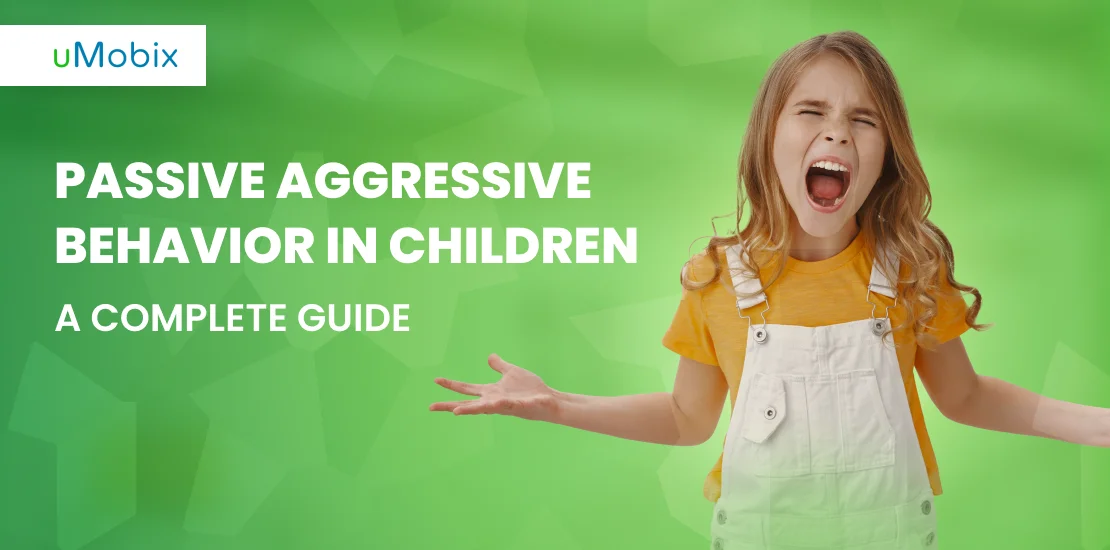You’ve probably heard of passive aggressive behavior, and you likely know it’s disliked. However, you may not know everything about it and why you should nip it in the bud if you have a passive aggressive child. Children, especially teenagers, can be moody, so how do you know the difference between an angsty teen and something more at play? We’ll tell you. So let’s dive into why dealing with passive aggressive child is so important.
Passive Aggressive Definition: What Is It?
Let’s look at the passive aggressive meaning. Passive-aggressive behavior consists of words or actions that seem innocent at face value but are unconsciously aggressive.
This behavior tends to come from people with less power than the person they’re being passive-aggressive against, so instead of outright saying their opinions, they will show passive defiance in their own way.
Because of the nature of passive-aggressive behavior, many children and teens display it against their parents. Some may see it as a form of passive resistance against authority, while others may be afraid to state their opinions bluntly because of fear of reactions.
Causes of Passive Aggressive Children Behavior
- Family upbringing. If a child was raised in a household where expressing one’s emotions is frowned upon, they might be passive defiant as a safe way to display their feelings. If the child has passive aggressive parents, this behavior can be learned, too.
- Mental health issues. For example, a depressed teenager may be more likely to show passive-aggressive behavior than a teenager who is not depressed. Other mental health issues, such as anxiety, may also play a part.
- The child has difficulties being assertive. Sometimes, this is from learned helplessness, when a child cannot find solutions to specific situations or from their very nature.
- Situational usage. A child may be in a setting where being confrontational is frowned upon, such as a classroom setting. If you see a child being passive-aggressive in some areas and not others, this may be why.
What About Signs of Passive-Aggressive Behavior?
As mentioned, passive-aggressive behavior can be hidden, so spotting passive aggressive signs is vital. Here are some general signs and parenting tips.
- Sarcastic comments. For example, if you ask your child to take out the garbage, they may say, “I’d love to do that,” in a sarcastic tone.
- Your child refuses to talk to you. The silent treatment is an example of passive aggressive abuse.
- The child says, “I’m fine,” when something is clearly wrong.
- They are slamming on doors, sighing, pouting, or performing other non-verbal behaviors that show they are upset with you.
- They complain about situations with others when they’re indirectly speaking about problems with you.
- They are intentionally making mistakes that will inconvenience you or make you flustered.
- Feeling unappreciated. This may come in the form of a child keeping score about how they do everything, only to get nothing in return.
If you see any of these signs, your kid might exhibit some form of passive aggressiveness toward you.
What Are Some Examples of Passive Aggressive Behavior?
- Backhanded compliments. If you’ve gained weight and put on a dress, your child may say you’re brave for wearing those clothes. If the compliment feels off, it may be passive aggressive.
- You see your kid gossiping about their friends on social media when they’ve never confronted them about this in real life.
- They ghost people’s messages. For example, if your teen daughter stops talking to her boyfriend, this may be a sign of passive aggressive behavior.
- They are always making excuses. If you ask them to take out the trash, they may respond to this by giving one excuse after another when you know none of these apply.
- A child is giving unsolicited advice, such as telling their friends how they need to lose weight.
- Crossing arms, rolling their eyes, and other body language that seems negative.
Passive-aggressive behaviors can come in many other examples as well. As mentioned, these behaviors can seem innocent at first, so give them the benefit of the doubt if you feel like there are one or two behaviors that feel passive-aggressive. However, if there are many, this can be a sign that your child is being passive-aggressive.
6 Ways to Teach Your Child How Not to Be Passive Aggressive
Every child, especially in their teens, is going to have the behavior you can deem passive aggressive. However, excessive passive-aggressive behavior can lead your child to be not assertive or lose friends because of how they act. Here are 6 ways for you to deal with this.
Identify the Red Flags
Since passive-aggressive can be subtle, nonverbal, and have plausible deniability, you must look for all the signs. Your child displaying some signs here and there may be normal behavior, especially for a moody teen. However, if they show multiple signs and it’s frequent, you should step in.
Be a Good Role Model
If you display passive aggressive behaviors yourself, you should not be surprised that your offspring is doing it too. Be mindful of how you act, and try to curb any behaviors you may have that are passive-aggressive. Speak to a therapist to learn mindfulness and cognitive behavior therapy techniques if needed.
Have Limits and Discipline Consistently
Telling your offspring to stop passive-aggressive behavior may not be good enough. Have a limit on how often they can act this way, and if they push your limit, discipline them consistently. That said, do not make them afraid to tell you how they feel.
Improve Your Child’s Self-Esteem
Passive-aggressive behavior can be due to low self-esteem and self-confidence. As such, figure out the causes of your kid’s feelings, and see if there are any ways to improve their self-esteem. If it’s due to depression, see if therapy can help improve their symptoms.
Establish Logical Consequences
Besides setting discipline, say that no one likes this behavior. Give examples of how they can lose friends, relationships, and jobs due to passive aggressive behavior. Express how saying your feelings is how to get actions done. Mention that these actions are not as secret as they think, either.
uMobix Can Help Reduce Your Child’s Passive-Aggressive Behavior

As we’ve mentioned, depression and personal issues can cause passive-aggressive behavior. If your teen is suddenly passive-aggressive, there could be some issues with their friends, relationships, or another secret they’re hiding from you.
One way to find the causes of a child’s behavior is to install uMobix, a phone tracker and parental control app that stays hidden on the phone while you keep track of its owner’s actions. It does a lot while being affordable for most parents. Let’s look at how uMobix can help you understand why your offspring is acting like this.
- Monitor Social Media. Your kid may be passive-aggressive due to cyberbullying or other online issues. With this service, keep track of their behaviors on social media apps and messengers.
- Track Their GPS Location. They may say they’re spending the night with their friends, but they may be going somewhere else that’s bad for them. With uMobix, see exactly where they are in real time and be alerted if they leave set boundaries.
- See Media. Is your kid sending or receiving inappropriate videos or photos? Have no fear. With uMobix, track what media they are receiving or sending and even access media that has since been deleted.
- Enable Audio and Video Streaming. With uMobix, control the target phone microphone and camera. See and hear where they are in real time, letting you spot bullies or see if your child is getting into inappropriate behavior.
- View Browsing History and Deleted Info. See what your child does online, even in incognito tabs. Also, while they may delete their browsing history, uMobix can access it, letting you see which sites they visit frequently.
How to Get Started with uMobix
This app is compatible with Android and Apple phones. However, some models may not be compatible. That said, uMobix makes it simple to see if your device is compatible. Visit their website, enter the target’s phone model, and see if it’s compatible.
If everything is good, you may then purchase a subscription. With iPhones, install the app via iCloud, but Android requires physical installation. Luckily, the application gives you a one-click link to install it.
Once installed, it quietly runs in the background. Then open the dashboard on the website to see your child’s activities.
Conclusion
Passive aggressive behavior is expected in children and teens, but excessive behavior can indicate something is wrong. Look for the signs, and step in if necessary. In addition, you can install a parental control spy app to get to the root cause of a child’s behavior. Speak with your child about how not to be passive aggressive. We hope this article was helpful.





